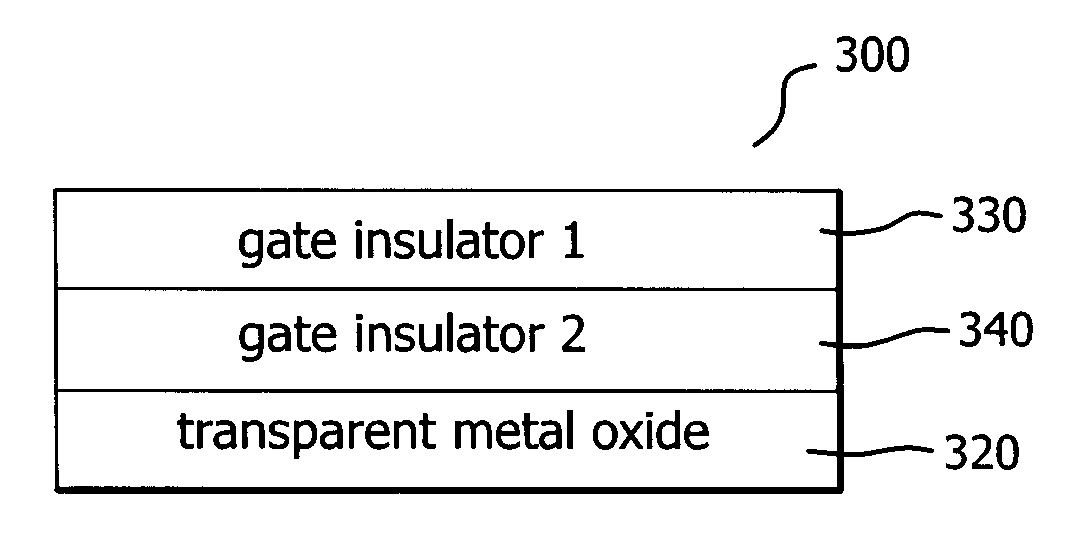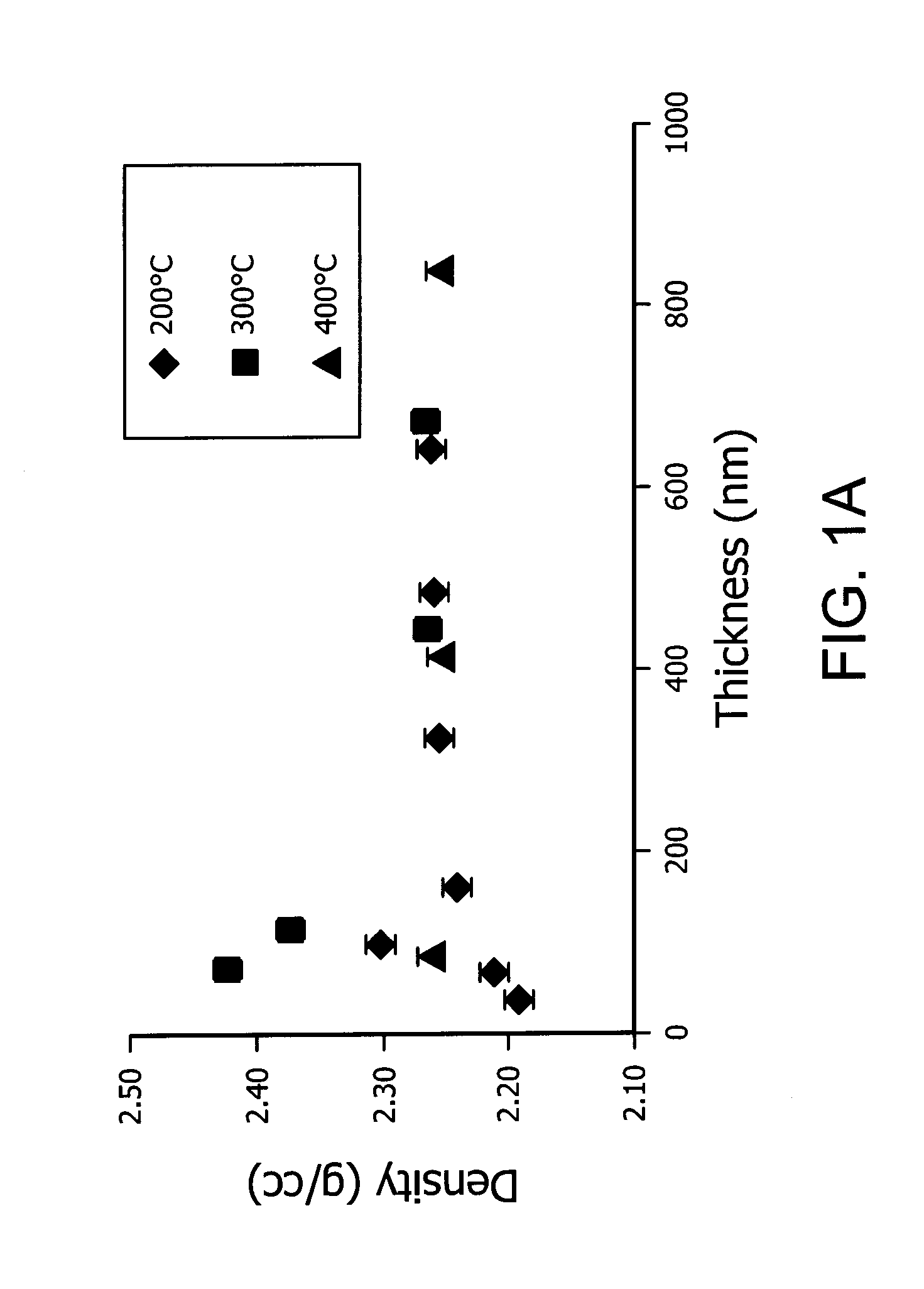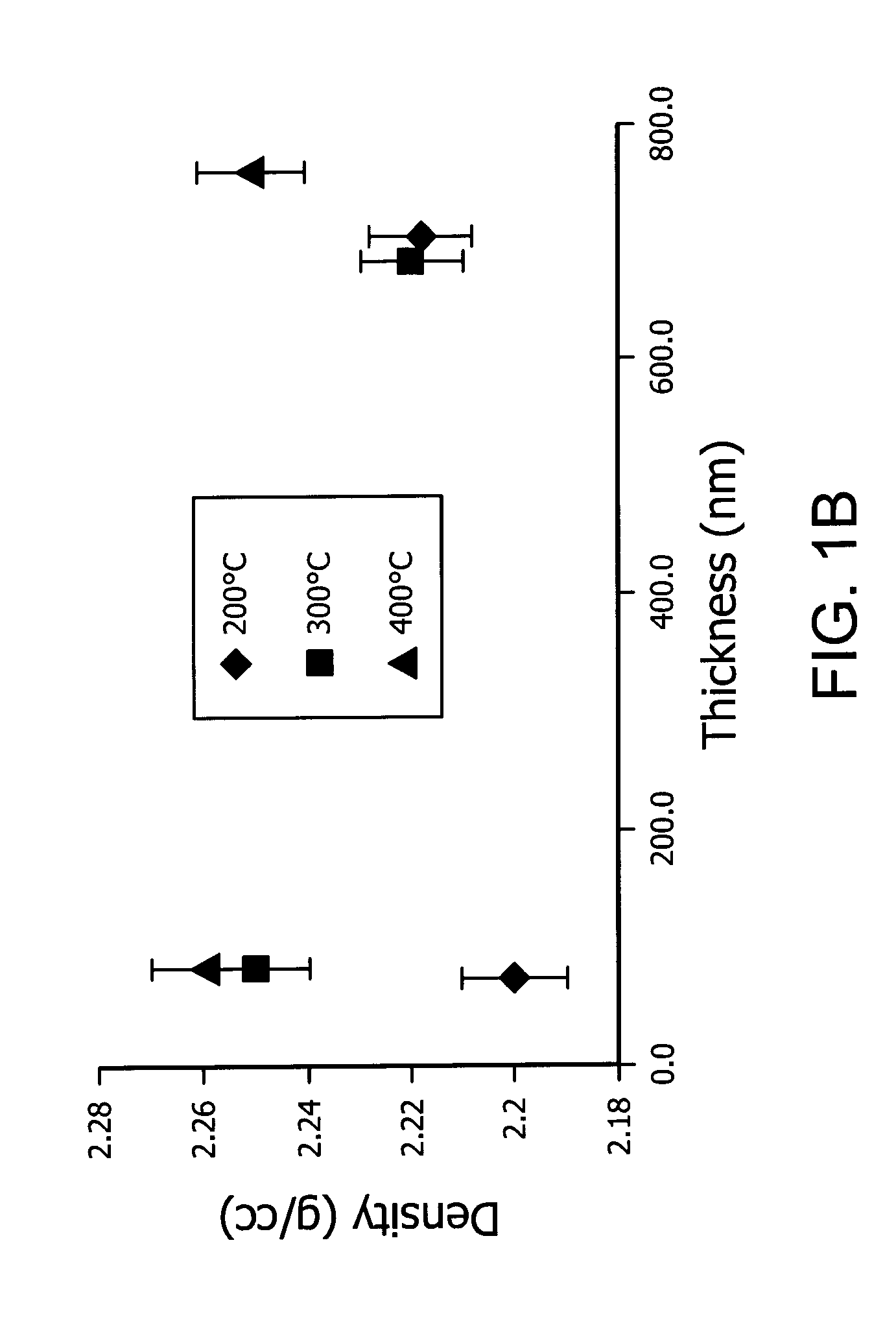Compositions and methods for making silicon containing films
- Summary
- Abstract
- Description
- Claims
- Application Information
AI Technical Summary
Benefits of technology
Problems solved by technology
Method used
Image
Examples
example 1
Deposition of Diethylsilane (2ES) and Triethylsilane (3ES) at Deposition Temperatures of 200° C., 250° C., 300° C., 350° C., and 400° C.
[0089]Silicon oxide films were deposited from the silicon precursors 2ES and 3ES SiO2 films were deposited at different temperature and process conditions using the general deposition conditions described above. BL-1 and BL-2 conditions are identical except for precursor flow. While BL-1 process has the highest deposition rate due to higher precursor flow, it is not the most important criterion for gate insulation layers. BL-3 is a lower pressure condition and generally gives poorer films. A comparison of same amount of Si-feed between precursors was used to understand whether a truly better quality film can be produced. As seen in FIGS. 1A and 2A, generally higher densities are obtained for films >200 nm with BL-2 process (>2.2 g / cc) and FIG. 1B, 2B; slightly lower densities were obtained with BL-3 process (˜2.2 g / cc). The BL-1 process conditions w...
example 2
Comparison of Silicon Oxide Films Deposited Using BL2 Process Condition and Tetraethoxysilane (TEOS) vs. Diethysilane (2ES)
[0095]SiO2 films were deposited using the process conditions described above in the general deposition conditions and in Table 1. In FIGS. 1C and 1D, TEOS deposited silicon oxide films having different thicknesses were deposited at the same BL-2 and BL-3 process conditions described above in Table 1. Referring to FIG. 1C, compared to the 2ES and 3ES films deposited using BL-2 at identical deposition temperatures (see FIG. 1A and FIG. 2A), at lower deposition temperatures such as 200° C., the TEOS-deposited films generally had lower density than the 2ES or 3ES films. A similar effect was observed when comparing the data in FIG. 1D with the data for the 2ES films and 3ES films in FIGS. 1B and 2B) for the same deposition temperatures. The 2ES and 3ES films generally exhibited equal or higher density for the thinner films. In general, the density of TEOS film drops ...
example 3
Deposition of Thin SiO2 Films Using 3ES with High Density and Electric Properties
[0102]Process conditions for the 3ES silicon oxide films were screened using a design of experiment (DOE) methodology summarized below: precursor flow from 10 to 200 sccm; O2 / He flow from 100 to 1000 sccm, pressure from 0.75 to 10 torr; Low-frequency (LF) power 0 to 100 W; and deposition temperature ranged from 25 to 350° C. The DOE experiments were used to determine what process parameters produced the optimal film for use as a gate insulating layer in a display device.
[0103]SiO2 films were deposited using the precursor 3ES at even lower deposition temperatures, such as 100° C., 125° C. and 150° C. then described above in the previous examples. By optimizing the process parameters, such as precursor flow, chamber pressure and power density, high density and thin SiO2 films are obtained. Table 2 shows a summary of the three process conditions used for 3ES film deposited at different temperatures 100° C....
PUM
| Property | Measurement | Unit |
|---|---|---|
| Temperature | aaaaa | aaaaa |
| Temperature | aaaaa | aaaaa |
| Temperature | aaaaa | aaaaa |
Abstract
Description
Claims
Application Information
 Login to View More
Login to View More - R&D
- Intellectual Property
- Life Sciences
- Materials
- Tech Scout
- Unparalleled Data Quality
- Higher Quality Content
- 60% Fewer Hallucinations
Browse by: Latest US Patents, China's latest patents, Technical Efficacy Thesaurus, Application Domain, Technology Topic, Popular Technical Reports.
© 2025 PatSnap. All rights reserved.Legal|Privacy policy|Modern Slavery Act Transparency Statement|Sitemap|About US| Contact US: help@patsnap.com



